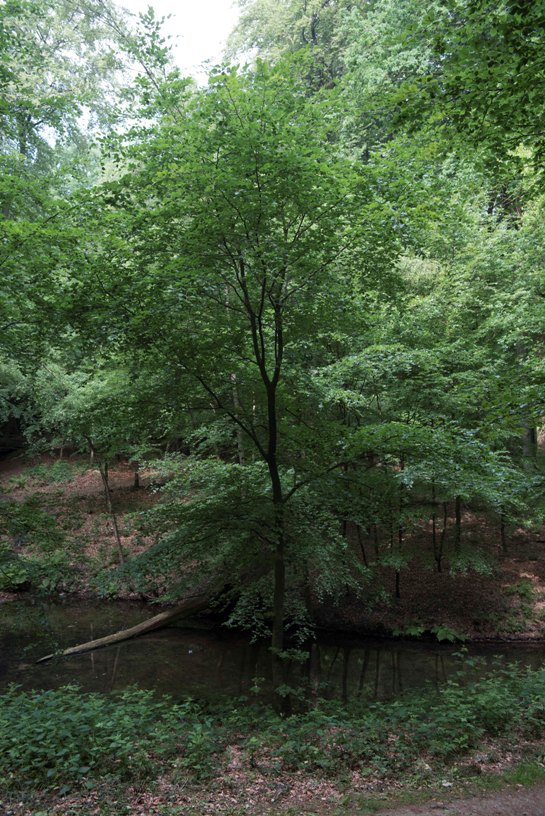Beech
Fagus sylvatica
Beech family (Fagaceae)
The western giant of mature, dark woods
If people ceased mowing, pruning and felling much of Europe would be covered in forest: dense, dark forests with tall trees and a closed canopy and the common beech would be one of the most important components.
These trees can reach up to 46 m high, have thick straight trunks with silvery bark that support a dense crown of small green, serrated leaves. In the autumn the tree sheds its leaves yet in the spring and summer there are so many leaves that not enough sunlight is able to penetrate and allow other plants to grow on the ground beneath them. Occasionally a beech will fall and in the clearing around the tree there is a risk of plants becoming sunburnt by the sudden increase in light intensity.
There is only one common beech species, all the other beeches - the copper beech, weeping beech, fern-leaved beech, Dawyck beech and twisted beech - are descended from just a few individuals, all variants of the common beech.
Read more.... »Present in:
Hortus Botanicus AmsterdamHortus Alkmaar
Historische Tuin Aalsmeer
Belmonte Arboretum
Trompenburg Tuinen en Arboretum
Botanische Tuin Arboretum Oudenbosch
Hortus Overzee
Hortus botanicus Haren / Groningen
Arboretum Poort Bulten
Botanische Tuin De Kruidhof
Nederlands Openluchtmuseum
ARTIS
Themes
Crown jewel of Holland Open Air Museum.
When fresh, beech nuts are not suitable to eat in large quantities as they contain hydrogen cyanide, which disappears on roasting.
The Dutch name for beech, 'beuk', is very closely related to the word 'book' ('boek'). The first documented records were made on the boards of beech wood and when the printing press was invented beech wood was also used to produce letters and woodcuts (important things needed to be 'vouchered in a book').
Beech wood is very flexible and easy to turn, which makes it eminently suitable for furniture making. It is also used for sleepers and parquet floors. It has no knots and is fine-grained. Beech wood is quite hard and heavy, malleable but brittle and not very durable. Wood shavings are used in the industrial preparation of, amongst other things, vinegar. The waste wood is excellent firewood, for example to fire furnaces and smoke fish. Beech is often planted as a hedge.
Beukenteer uit het hout was vroeger in gebruik voor geneeskrachtige doeleinden.
Details
| Description: | Tree, up to 20-40 cm tall with very thin, grey bark that remains smooth even in older trees. |
|---|---|
| Distributions: | West and central europe |
| Habitat: | In forests and coastal dune woodland |
| Year cycle: | Perennial (polycarpic decidous) |
| Hardiness: | -4 - 5 f (hardy - very cold winter) |
| Flowering period: | April - mei |
| Flower color: | Yellow, green |
| Notes on flowers: | Male flowers have reddish brown, bell-shaped perianth with four or more stamens borne in pendulous catkins; female flowers are gathered together in a cup-shaped involucre that later becomes leathery or woody, the so-called beech nut. |
| Fruiting period: | Augustus - oktober |
| Fruit color: | Brown |
| Notes on fruits: | The cupule of the female inflorescence develops into brown, prickly, woody husk, inside which usually two (sometimes three) nuts develop. |
| At its best: | Mei |
Sources
http://www.floravannederland.nl/planten/beuk/,http://www.floron.nl/publicaties/rode-lijst-2012,
http://wilde-planten.nl/beuk.htm,
IUCNredlist.org,
http://www.bomenstichting.nl/infotheek-en-faq/informatie-over-bomen/beuk.html,
Dendrologie van de lage landen - Jan de Koning en Wim van den Broek, Dendroflora 11-12 1975, Inheemse bomen en struiken in Nederland en Vlaanderen


